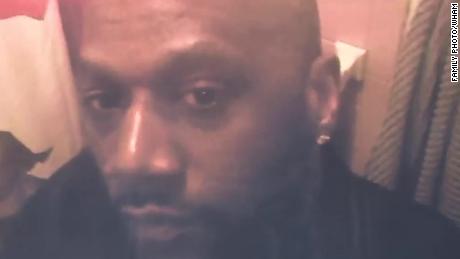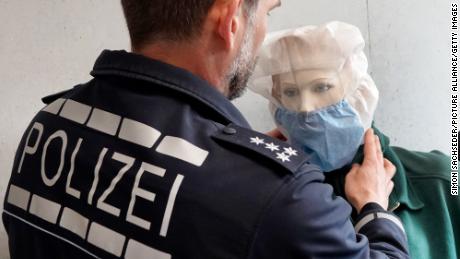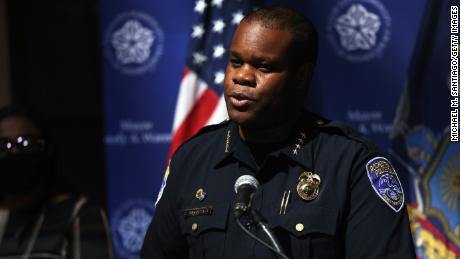“Daniel Prude was in the throes of a mental health crisis and what he needed was compassion, care, and help from trained professionals. Tragically, he received none of those things,” James said in a statement. “We concluded that there was sufficient evidence surrounding Mr. Prude’s death to warrant presenting the case to a grand jury, and we presented the most comprehensive case possible.
“While I know that the Prude family, the Rochester community, and communities across the country will rightfully be devastated and disappointed, we have to respect this decision,” James added.
Police dash and body camera footage, released to the public months after the incident, showed officers handcuffing a naked Prude and covering his head with a “spit sock” after he claimed he had the coronavirus and was spitting.
The officers held him and pushed him to the ground in a prone position, according to the video, which also showed officers kneeling on Prude.
EMTs arrived later and began to perform chest compressions, the video showed. Prude was placed on a gurney and into an ambulance.
When Prude arrived at the hospital, he was brain-dead, according to his brother. He died a week later.
Seven police officers involved in the arrest were suspended. The police union has insisted the officers followed their training and protocols.
Prude, 41, was having a mental health episode on March 23 when his brother Joe called the Rochester Police Department for help, his family told reporters.
Prude’s death was ruled a homicide by the Monroe County Medical examiner, according to a copy of the autopsy report obtained by lawyers for his family. The report cited complications of asphyxia in the setting of physical restraint as a finding. The report also cited excited delirium and acute PCP intoxication as causes of death.
Family members connected his March death — two months before George Floyd’s death in similar circumstances — to the movement against police violence toward Black people. Protests erupted in Rochester after the body cam footage was released.
The death also raised questions about how police respond to cases involving people in a mental health crisis. Police are often the first to respond to reports of a person acting erratically, and they occasionally use police tactics or force in their response.
The Rochester City Council in September authorized subpoena power to a New York City law firm leading the independent investigation into the city’s handling of the case — particularly whether there was internal cover-up, and how information about Prude’s death was kept from the public in the city in western New York.
In September, the city released 325 pages of internal emails, police reports and other documents that showed a concerted effort by police and city officials to delay the release of incriminating body camera footage.
In one released police incident report, among many edits, some prosaic, Prude’s name is written in the space labeled “Victim.” Prude’s name is circled in red, next to a large, handwritten note: “Make him a suspect.”
Rochester Mayor Lovely Warren pushed out the police chief ahead of his retirement and suspended two other city employees.
Prude’s sister in September filed suit in federal court against the former police chief, 13 officers and the city, claiming in part a department cover-up of the death.
The former police chief, La’Ron Singletary, said earlier this month that he didn’t see anything “egregious” or any criminal conduct from police officers when he first watched body camera video of the incident. He testified in a virtual deposition to an independent investigator.










